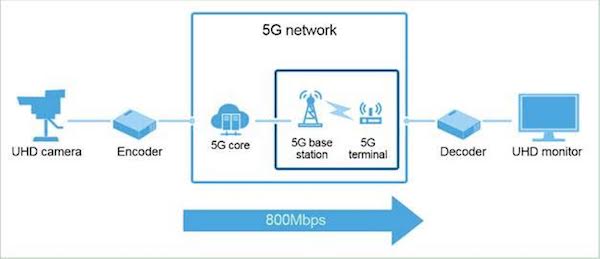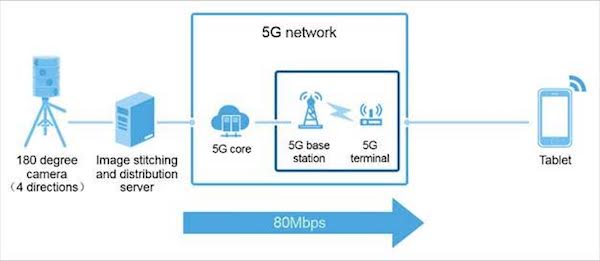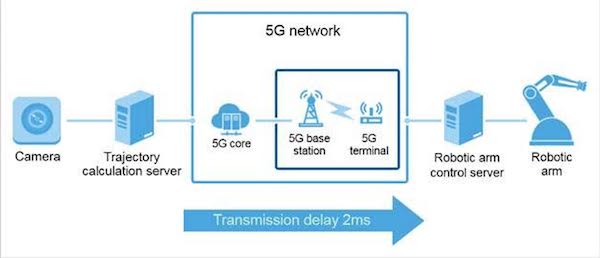Long hours, streamlined features to finish draft. The race is on to deliver some form of 5G as soon as possible.
An Intel executive painted a picture of engineers pushing the pedal to the metal to complete an early version of the 5G New Radio (NR) standard by the end of the year. She promised that Intel will have a test system based on its x86 processors and FPGAs as soon as the spec is finished.
The 3GPP group defining the 5G NR has set a priority of finishing a spec for a non-standalone version by the end of the year. It will extend existing LTE core networks with a 5G NR front end for services such as fixed-wireless access.
After that work is finished, the radio-access group will turn its attention to drafting a standalone 5G NR spec by September 2018.
“Right now, NR non-standalone is going fine with lots of motivation, come hell or high water, to declare a standard by the end of December,” said Asha Keddy, an Intel vice president and general manager of its next-generation and standards group. “The teams don’t even break until 10 p.m. on many days, and even then, sometimes they have sessions after dinner.”
To lighten the load, a plenary meeting of the 3GPP radio-access group next week is expected to streamline the proposed feature set for non-standalone NR. While a baseline of features such as channel coding and subcarrier spacing have been set, some features are behind schedule for being defined, such as MIMO beam management, said Keddy.
It’s hard to say what features will be in or out at this stage, given that decisions will depend on agreement among carriers. “Some of these are hit-or-miss, like when [Congress] passes a bill,” she said.
It’s not an easy job, given the wide variety of use cases still being explored for 5G and the time frames involved. “We are talking about writing a standard that will emerge in 2020, peak in 2030, and still be around in 2040 — it’s kind of a responsibility to the future,” she said.
The difficulty is even greater given carrier pressure. For example, AT&T and Verizon have announced plans to roll out fixed-wireless access services next year based on the non-standalone 5G NR, even though that standard won’t be formally ratified until late next year.
N
Companies such as Intel and Qualcomm have been supplying CPU- and FPGA-based systems for use in carrier trials. They have been updating the systems’ software to keep pace with developments in 3GPP and carrier requests.
For its part, Intel has deployed about 200 units of its 5G test systems to date. They will be used on some of the fixed-wireless access trials with AT&T and Verizon in the U.S., as well as for other use cases in 5G trials with Korea Telecom and NTT Docomo in Japan.
Some of the systems are testing specialized use cases in vertical markets with widely varied needs, such as automotive, media, and industrial, with companies including GE and Honeywell. The pace of all of the trials is expected to pick up next year once the systems support the 5G non-standalone spec.
Intel’s first 5G test system was released in February 2016 supporting sub-6-GHz and mm-wave frequencies. It launched a second-generation platform with integrated 4×4 MIMO in August 2016.
The current system supports bands including 600–900 MHz, 3.3–4.2 GHz, 4.4–4.9 GHz, 5.1–5.9 GHz, 28 GHz, and 39 GHz. It provides data rates up to 10 Gbits/second.
Keddy would not comment on Intel’s plans for dedicated silicon for 5G either in smartphones or base stations.
In January, Intel announced that a 5G modem for smartphones made in its 14-nm process will sample in the second half of this year. The announcement came before the decision to split NR into the non-standalone and standalone specs.
Similarly, archrival Qualcomm announced late last year that its X50 5G modem will sample in 2017. It uses eight 100-MHz channels, a 2×2 MIMO antenna array, adaptive beamforming techniques, and 64 QAM to achieve a 90-dB link budget and works with a separate 28-GHz transceiver and power management chips.
Source: http://www.eetimes.com/document.asp?doc_id=1332248&page_number=2






